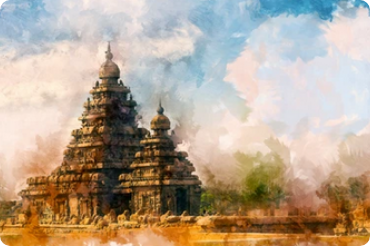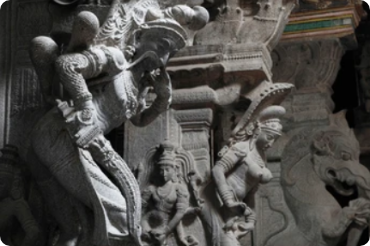More about South India

Medieval South Indian history is a captivating tapestry of rich and diverse cultures, powerful empires, and intricate socio-political developments that unfolded in the southern part of the Indian subcontinent between the 6th and 17th centuries. During this era, South India bore witness to a remarkable confluence of art, religion, and trade.
At its heart, this period was marked by the rise and fall of prominent dynasties, such as the Cholas, Chalukyas, Pallavas, and Vijayanagara, each leaving an indelible imprint on the region. These powerful empires vied for supremacy, leading to periods of remarkable economic prosperity and cultural flourishing.
Religion played a pivotal role in shaping medieval South Indian history, with the spread of Hinduism and the enduring influence of Dravidian architecture, which gave rise to stunning temples and sculptures that continue to astonish visitors today. Furthermore, the region’s interaction with Buddhism and Jainism added an extra layer of diversity to its religious landscape.
Medieval South India was also a crucial hub for trade, with flourishing maritime routes that connected it to the Middle East, Southeast Asia, and Europe. This allowed for the exchange of goods, ideas, and cultures, contributing to the region’s cosmopolitan character.
As we explore this captivating period in South Indian history, we uncover a world of dynamic monarchs, artistic splendor, religious devotion, and cultural exchange that have left an enduring legacy on the South Indian subcontinent.
